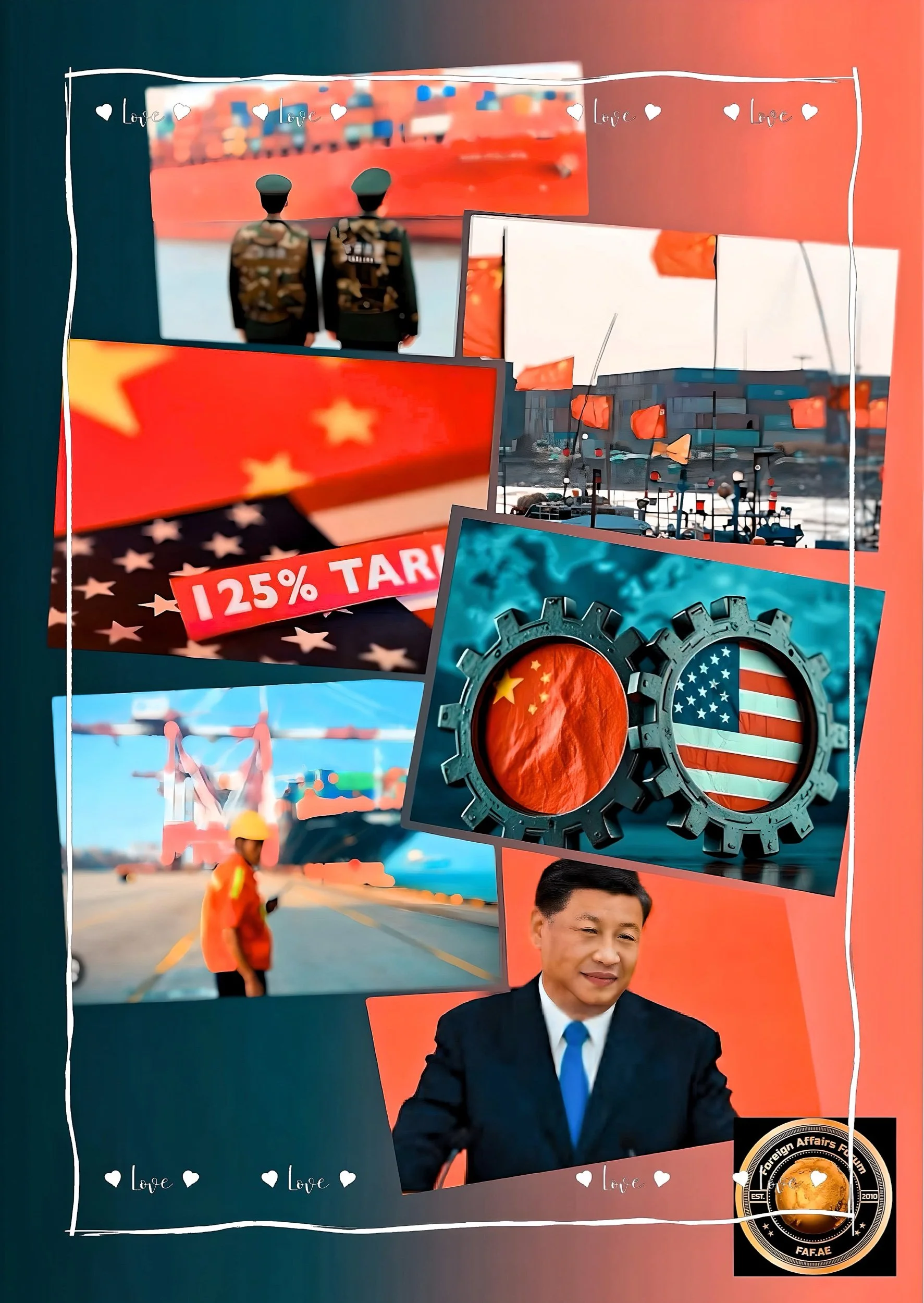The Strategic Role of Rare Earth Minerals in US-China Trade Tensions
Introduction
The US-China trade war has entered a new escalation phase, with rare earth minerals emerging as a central battleground in the geopolitical and economic rivalry between the two superpowers.
These 17 elements, critical for advanced technologies ranging from defense systems to renewable energy infrastructure, have become a potent tool in Beijing’s economic statecraft arsenal. China’s dominance over 85% of global rare earth processing capacity and 70% of mining output has transformed these minerals into a strategic lever, creating vulnerabilities the US is now scrambling to address.
This report examines how rare earth elements (REEs) have shaped trade dynamics, influenced retaliatory measures, and created systemic risks for global supply chains.
China’s Rare Earth Dominance and Strategic Leverage
Historical Foundations of Market Control
China’s ascendancy in rare earths began with deliberate state planning in the 1980s, when policymakers recognized the strategic value of these resources.
China undercut global competitors to capture 90% of the market by 2010 through subsidized production, lax environmental regulations, and export tax incentives. The 2010 crisis—when China restricted exports to Japan during a territorial dispute—demonstrated Beijing’s willingness to weaponize mineral supplies, establishing a pattern that continues in current trade tensions.
Structural Control Over Supply Chains
As of 2025, China maintains comprehensive dominance across the rare earth value chain:
Mining
70% of global rare earth ore extraction
Processing
85% of global refining capacity for critical heavy REEs
Manufacturing
92% of permanent magnet production essential for EVs and wind turbines
This vertical integration creates choke points that Beijing can selectively constrict.
The April 4, 2025 export controls on samarium, gadolinium, terbium, dysprosium, lutetium, scandium, and yttrium exemplify China’s precision targeting—affecting materials crucial for precision-guided munitions (dysprosium), fighter jet alloys (scandium), and microchips (terbium).
US Vulnerabilities and Defense Sector Risks
Critical Dependencies
The United States faces acute supply chain vulnerabilities:
Direct Imports
80% of REEs sourced from China, with 100% import dependence for 14 critical minerals
Processing Gaps
No domestic capacity for heavy rare earth separation, particularly dysprosium and terbium
Defense Impacts
F-35 fighter jets require 920 pounds of rare earth materials per aircraft; Lockheed Martin’s JASSM-ER missiles depend on Chinese-sourced terbium
These dependencies create national security risks, as Pentagon contractors face potential supply disruptions.
The Department of Defense estimates that 90% of defense applications using rare earths have no viable short-term alternatives.
Economic Exposure Beyond Defense
China’s export controls threaten broader economic sectors:
Electric Vehicles
Dysprosium-based magnets improve motor efficiency by 40%; 78% of global EV production relies on Chinese REEs
Renewables
Offshore wind turbines require 2 tons of rare earths per megawatt capacity
Consumer Tech
iPhone components contain 0.35g of yttrium and europium for displays and vibration motors
Morgan Stanley projects that sustained export restrictions could increase lithium-ion battery costs by 18% and delay US EV production targets by 3-5 years.
Escalation Dynamics in the Trade War
China’s Calculated Retaliation
Beijing’s April 2025 measures represent a strategic escalation:
Licensing Requirements
Exporters must obtain MOFCOM approval, enabling Beijing to throttle supplies
Asymmetric Response
Targets materials where China holds >95% market share versus US tariffs affecting commoditized goods
Information Control
License applications reveal downstream users, enabling future sanctions on specific firms
This approach mirrors previous controls on gallium and germanium, which reduced exports to the US by 94% within six months.
US Countermeasures and Limitations
The Biden and Trump administrations have pursued mitigation strategies with mixed success:
Domestic Mining
MP Materials’ Mountain Pass mine produces 15% of global rare earth oxides but ships all to China for processing
Alliance Building
Mineral Security Partnership with Australia and Canada aims to develop alternative supply chains
Recycling Initiatives
Department of Energy’s $350 million pilot plants recover 89% of rare earths from e-waste
However, analysts estimate the US needs 7-10 years to build independent processing capacity—a timeline that conflicts with immediate defense needs.
Global Market Reactions and Secondary Effects
Price Volatility and Supply Chain Realignments
China’s restrictions triggered immediate market disruptions:
Price Surges
Dysprosium oxide prices jumped 127% to $465/kg in the first week
Stockpiling
US defense contractors increased inventory holdings from 90-day to 180-day supplies
Diversification
Apple accelerated plans to source 45% of magnets from Vietnam by 2026
The London Metal Exchange introduced rare earth futures contracts to hedge against volatility, with daily trading volumes reaching $280 million by April 2025.
Environmental Trade-Offs
Western efforts to reshore production face ecological challenges:
Radioactive Waste
Processing 1 ton of monazite ore generates 2,000 tons of toxic tailings
Energy Intensity
Rare earth separation requires 9.5 MWh per ton—8x more than lithium processing
These factors complicate domestic production in environmentally regulated markets, perpetuating reliance on China’s less stringent standards.
Strategic Implications and Future Scenarios
China’s Calculated Risk
Beijing balances economic gains against strategic influence
Revenue Loss
Rare earth exports generated $7.8 billion in 2024; prolonged restrictions could cost $3.2 billion annually
Technology Race
Controls on AI-critical minerals (e.g., scandium for chips) aim to slow US semiconductor advances
This dual-use strategy allows China to inflict asymmetric pain while maintaining plausible deniability about outright bans.
US Response Pathways
The US faces three potential trajectories:
Accelerated Decoupling
$42 billion in Defense Production Act funding to build domestic refineries by 2028
Alliance Consolidation
Quad Critical Minerals Partnership with Australia, India, and Japan to pool resources
Technological Substitution
DARPA’s $150 million program to develop dysprosium-free magnets by 2027
Each path carries risks—reshoring could increase consumer prices by 12-18%, while substitution research may take a decade to yield results.
Conclusion
Minerals as the New Currency of Power
Rare earth elements have transcended their industrial utility to become instruments of geopolitical strategy.
China’s ability to disrupt US defense projects and green energy transitions through targeted export controls demonstrates the vulnerabilities inherent in concentrated supply chains. While the US has initiated long-term solutions, the immediate reality remains one of constrained options and calculated risk management.
As both nations recognize, whoever masters the rare earth value chain will wield disproportionate influence over 21st-century technological and military advancements.
The trade war’s outcome may ultimately hinge not on tariff percentages, but on which power first achieves mineral independence—a race where China currently holds a commanding lead but faces growing international pushback.






